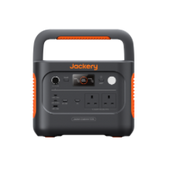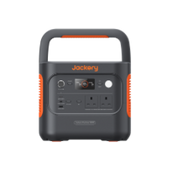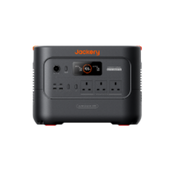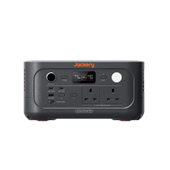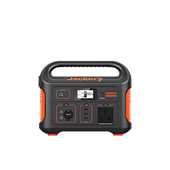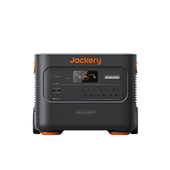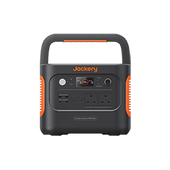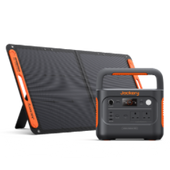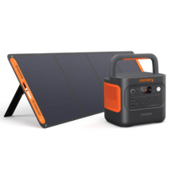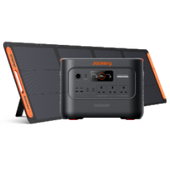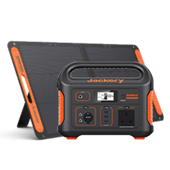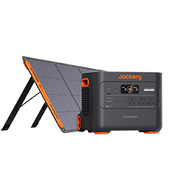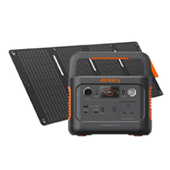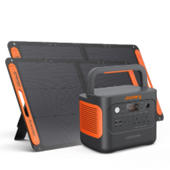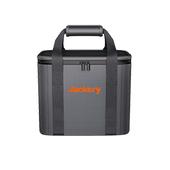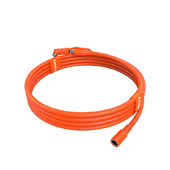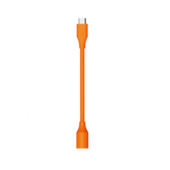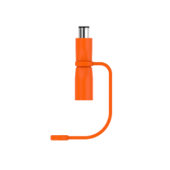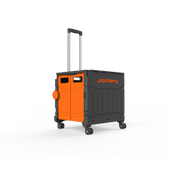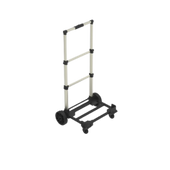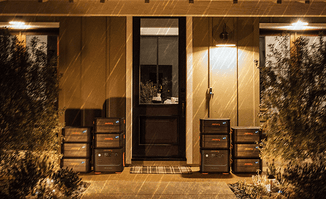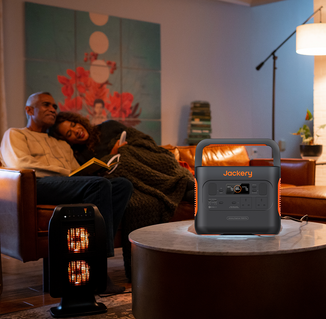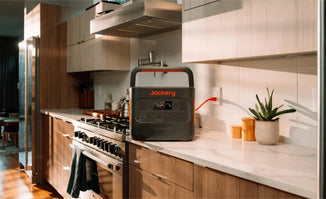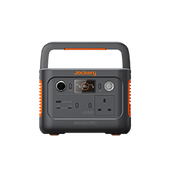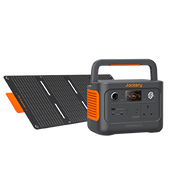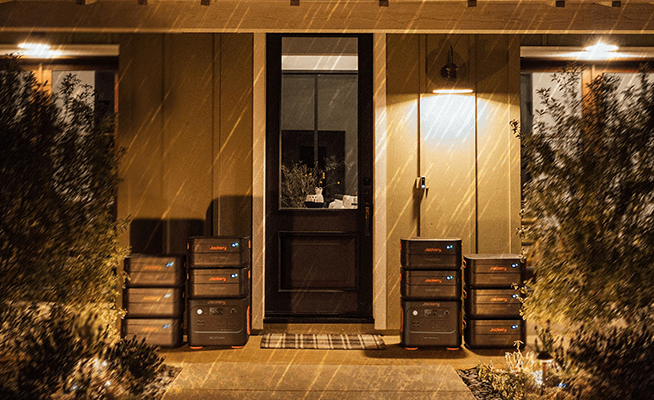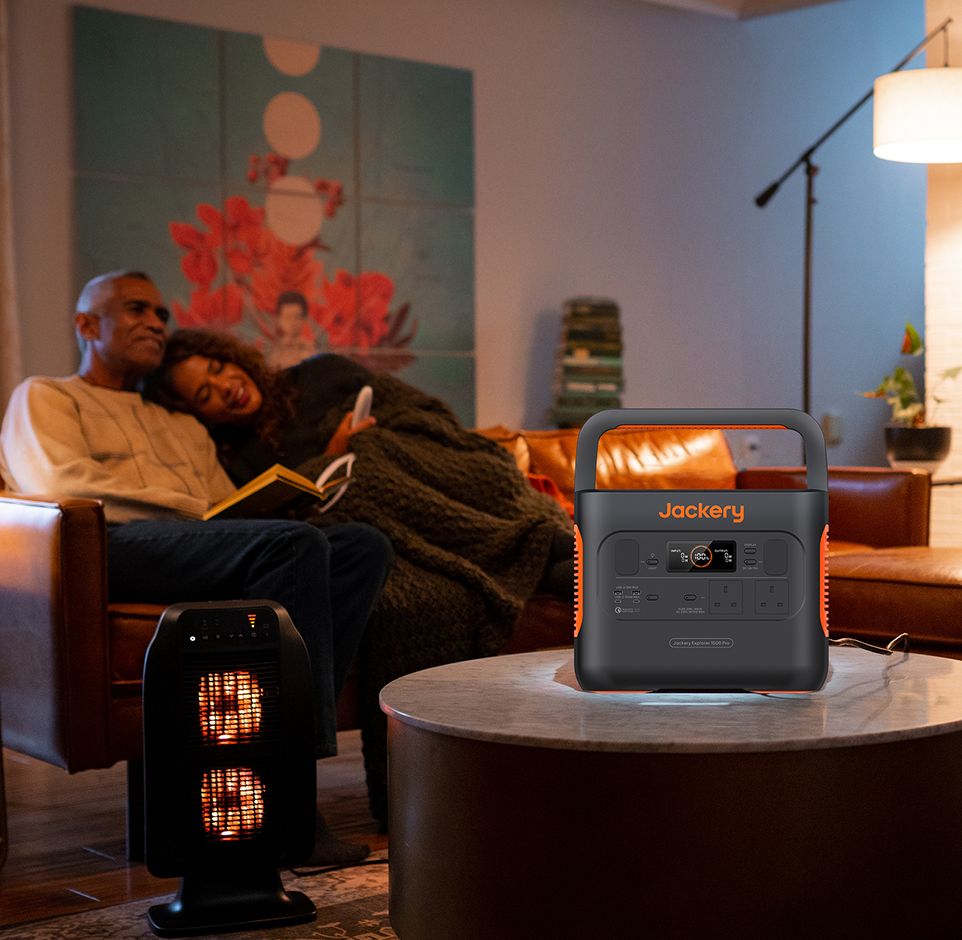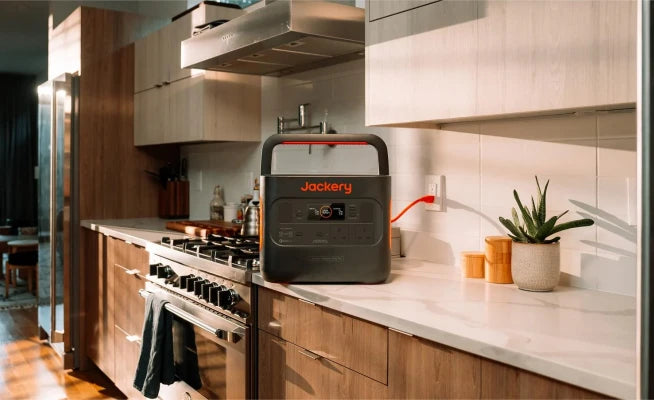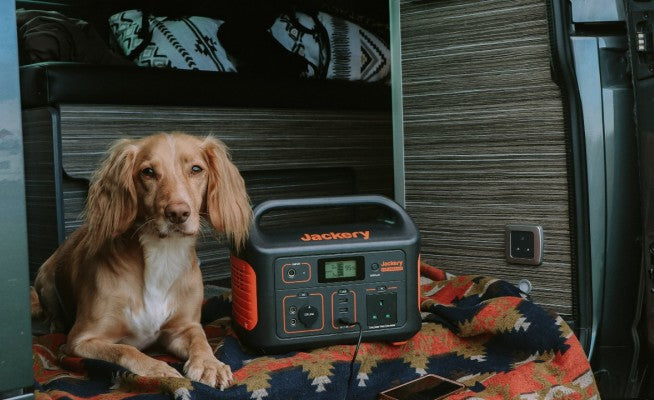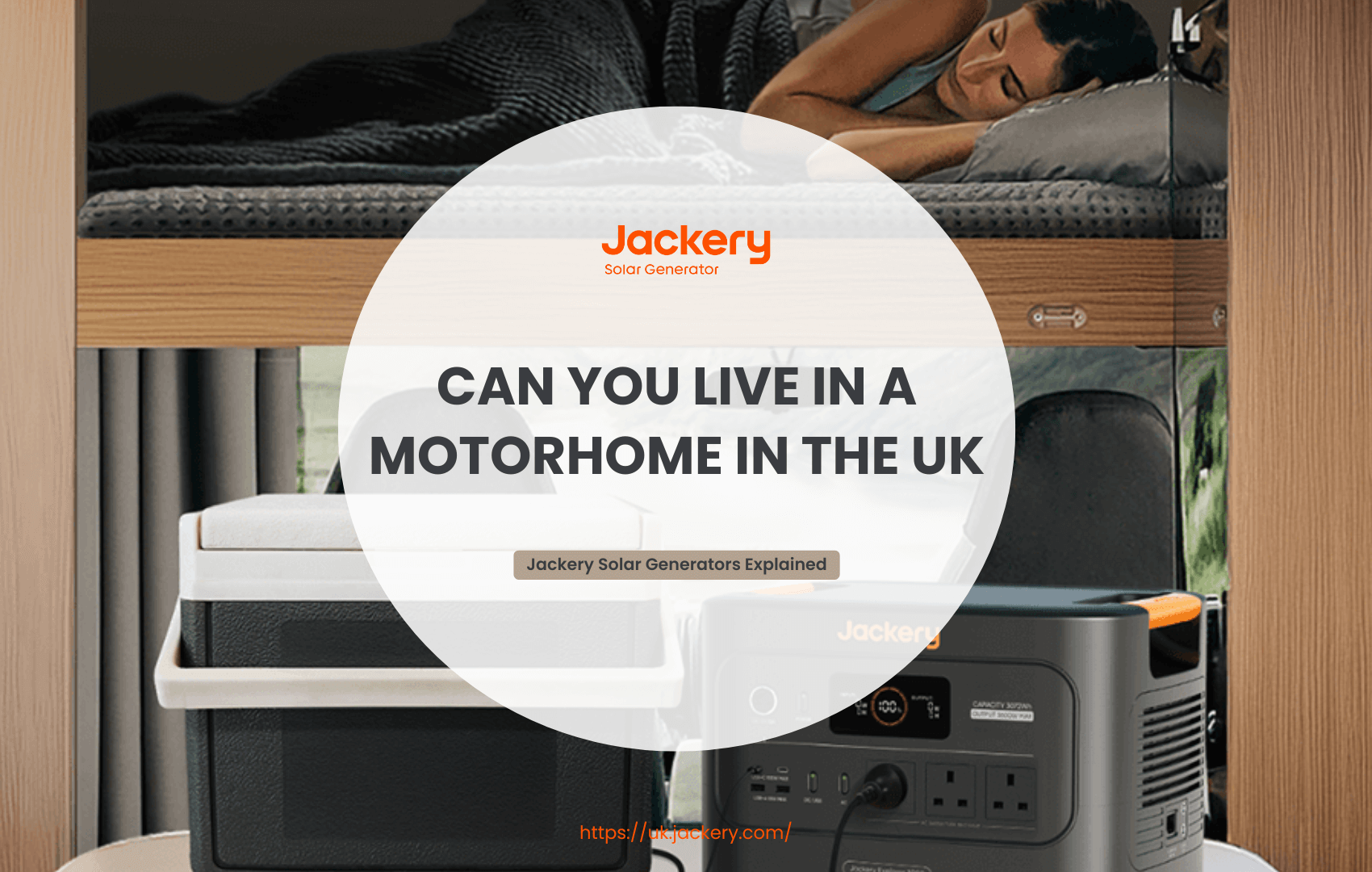If you're thinking about getting a jacuzzi for your home or garden, it's important to know how much it will cost to run. People often focus on the initial costs, but it's the ongoing costs of energy, maintenance, and supplies that surprise new owners the most. So, how much does it cost to run a jacuzzi in the UK?
The answer depends on a number of things, such as electricity rates, water temperature, usage habits, and the quality of the insulation. This guide breaks down everything you need to know to make an informed decision and keep your jacuzzi running well without spending too much money in 2025 and beyond.
|
Key Takeaways: |
|
How Much Does It Cost to Run a Jacuzzi?
If you're considering about creating an outdoor leisure area, you've certainly wondered how much it will cost to operate a jacuzzi in 2025. A jacuzzi can be a significant expenditure, particularly in terms of electricity bills. If you're considering buying a jacuzzi, you should do the maths.
Most energy-efficient hot tubs with normal usage consume between 3.5 kWh and 7 kWh per day. Some sources from Jacuzzi suggest their models average around 5 kWh per day.
When determining the cost of running a jacuzzi, there are three major elements to consider:
Electrical operating costs
Service and maintenance.
Consumables and watercare items.
How Do You Calculate Jacuzzi Electrical Cost?
First and foremost, let us look at jacuzzi electricity expenditures and kWh utilisation.
As you might anticipate, energy consumption accounts for the majority of expenditures associated with running your jacuzzi. This is due in large part to the heaters used to keep your jacuzzi's water at a steady temperature while in use, but it also includes the power required to activate your tub's lights and air jets, which cost more the more you use them.
Of course, your current energy tariff will have a significant impact on how much you can expect to pay in energy costs for your jacuzzi, and if you know you're on a more expensive tariff, switching to a cheaper tariff could help reduce your jacuzzi's overall running costs, but the quality of your tub's insulation can also have an impact on how much you spend.
When budgeting for a jacuzzi, here's a simple equation of the many prices that you should consider:
Water heating + Cleaning + Consumables + Repairs = Total cost of running a jacuzzi
Speak with local jacuzzi specialists in your area to get an accurate estimate of how much it costs to run a jacuzzi in the UK. They will be able to advise you on normal jacuzzi operating costs in your area.
Estimated Cost Of Running a Jacuzzi In The UK
While jacuzzi operating expenses can vary greatly, if you sum up all of the components for an average-sized (high quality) jacuzzi that's used three or four times a week for about 30-45 minutes at a time, you can normally expect to pay:
£400-£475 in electricity
£150-£300 in service charges.
£250-£300 for consumables and water care
Running a jacuzzi costs between £800-£1,075 per year.
That is substantially less than a daily coffee at your local Costa or Starbucks, yet it allows you to reap all of the health benefits of using a jacuzzi.
So, if you value your physical and mental health, your general sense of well-being, your sleep quality, and the quality of the time you spend in a tech-free zone really conversing to your loved ones, a jacuzzi is an excellent investment.
Maintenance Running Costs Of a Jacuzzi
Every now and then, you may have to fix or substitute some of your jacuzzi's components. Below are some of the typical maintenance costs for running a jacuzzi:
|
Type of jacuzzi repair |
Unit |
Average UK cost |
|
Replacement jets |
Per jet |
£65 |
|
Replacement thermostat |
Per unit |
£38 |
|
Labour of technician |
Per hour |
£75 |
|
Clean and service |
Annually |
£225 |
|
Consumables and water care |
Annually |
£275 |
(Data Source: Check a Trade)
The Power Consumption of Jacuzzi
Your jacuzzi's energy usage will also be determined by a variety of factors, including:

Jacuzzi Usage
The more you use your jacuzzi, the more energy it will require to stay heated. This is why many people prefer to keep the jacuzzi running at a constant temperature rather than turning it on and off every time they want to use it. The prices should not limit your jacuzzi use; you should be able to enjoy the spa whenever you choose.
Water Replenishment
When you acquire your jacuzzi, you will be told how frequently you should refill the water. After replacing the water, you will need to warm it, so expect your next electricity bill to be slightly higher.
Larger tubs with more water require more energy to heat initially and to maintain temperature. An average hot tub might hold 800-1500 litres, but larger models can hold up to 5000 litres. Many people assume that they would need to drain and refill their jacuzzi frequently. This is not the case; you will only need to perform a deep clean on your jacuzzi about four times every year. To maintain your jacuzzi appearing clean, clean its shell and wipe the waterline on a regular basis.
After each deep clean, test the water with testing strips.
Jacuzzi Filters
Purchasing high-quality filters and chemicals for your jacuzzi can allow it to run more efficiently. This means fewer water changes because the quality of the water lasts longer. To keep the filter working properly, you should inspect and rinse it on a frequent basis. If you find any breakages, replace the filter.
Ambient Air Temperature/Climate
In colder UK winters, the hot tub's heater will work harder to maintain the desired water temperature compared to warmer summer months. Location within the UK (e.g., exposed coastal areas vs. sheltered inland) can also play a role.
Every degree higher adds to your energy bill. Most people set their tubs between 37-40°C. Lowering the temperature, even by a degree or two, can lead to savings.
Factors Affecting the Running Costs of a Jacuzzi
Several factors influence the cost of running a jacuzzi in the UK, including:

Factor 1: Size of Your Jacuzzi
The larger the jacuzzi, the more water it can contain, therefore it takes longer to heat the water. You don't have to worry about this because larger jacuzzis are typically designed with additional features to support it.
Factor 2: How Cold It Is out There
The speed at which your jacuzzi's water is heated is determined by your local climate. Your jacuzzi cover should be used all year round, but it is especially crucial in the winter. The cover can keep the spa water a little warmer in the winter. This means you won't have to worry as much about expensive jacuzzi heating bills.
Factor 3: The Water Temperature in Your Jacuzzi
The temperature settings in your jacuzzi can have a big impact on its energy usage and operating costs. The greater the water temperature, the more energy is required to heat and keep it at that level.
So, if you want to cut your energy use and electricity expenses, consider reducing the temperature somewhat. Even a little reduction in running costs can make a significant difference over time.It's also worth noting that ambient temperature plays a role; if your jacuzzi is located outside in colder areas, it will use more energy to maintain the ideal temperature than an indoor one.
Factor 4: Frequency of Use
The frequency with which a jacuzzi is used determines the cost of operation. A jacuzzi takes more energy as it is used more frequently. higher use results in higher heat loss, putting the jacuzzi's system and components to work harder.
Factor 5: Your Energy Tariff
The current energy tariffs in your area will determine how much it will cost to run your jacuzzi. This is not to say that you should expect to pay a hefty amount. High-quality jacuzzis rarely require a lot of electricity. To save money on energy, some jacuzzi owners prefer to leave their jacuzzi on standby and keep the water temperature constant. This is sometimes more effective than heating it every time you use it.
Factor 6: Insulation
Proper insulation is critical for keeping your jacuzzi's operating costs under control. Jacuzzis without enough insulation can increase daily operating costs by up to five or six times.
However, jacuzzis with high-density foam insulation are more energy-efficient and assist to maintain heat more effectively, lowering energy usage and, ultimately, saving you money on your electricity costs.
A well-insulated jacuzzi will also keep the water at a consistent temperature for extended periods of time, allowing you to enjoy your peaceful soak without having to constantly reheat it.
As you can assume, the more you use your jacuzzi and the hotter the water, the higher the expense. Similarly, if the weather is colder outside, you will spend more time heating the jacuzzi water because the water will naturally cool faster.
Hidden Factors that Influence Jacuzzi Running Costs in the UK
Energy and maintenance costs are the most obvious ones, but there are other costs that are often missed that can affect the entire cost of maintaining your jacuzzi. Your energy tariff, how often you use it, the quality of the insulation, and even when you choose to heat your tub are all factors. By knowing these things, you can use less energy and save money over time.
Energy Tariff: The Hidden Hero of Lower Operating Costs
One of the most ignored aspects of managing your jacuzzi's operating costs is your energy tariff. The amount you spend per kilowatt-hour (kWh) of power can significantly affect your monthly payment. Switching to a lower or more energy-efficient tariff might save you hundreds of pounds each year, not just on your jacuzzi, but on your entire household's energy consumption.
Practical Savings in Practice
Let's break it down: a regular jacuzzi may consume 7-10 kWh per day to maintain its temperature, depending on the model, weather, and use. If you pay 34p per kWh, as some UK homes do on ordinary variable rates, running your jacuzzi may cost up to £3.40 per day.
However, switching to a lower plan at 28p per kWh reduces the cost to approximately £2.80 each day. Over the course of a year, those savings can really pile up-up to £219 saved each year simply by switching your energy supplier.
How to Make the Most of Your Tariff Benefits?
Monitor Your Use: Many energy companies now provide smart meters, which allow you to monitor your electricity usage in real time.
Plan Your Heating Carefully: Set your jacuzzi to heat up during off-peak hours if your tariff offers them.
Check Frequently: Energy deals change often, so evaluate your tariff every 12 months.

How Can I Keep Jacuzzi Energy Costs as Low as Possible?
Jacuzzi owners are partially responsible for energy saving. You may keep your energy expenditures reasonable by following your manufacturer's instructions and your dealer's suggestions for spa operation and maintenance.
To maximise energy efficiency, always leave your spa running with the water set to a consistent temperature, clean your filters on a regular basis, and cover your spa with a well-fitting, high-quality insulating cover when not in use. With higher energy prices in 2025, here are three useful suggestions for keeping operating costs low:
Use matting, a thermal blanket, or an outer cover to help prevent heat loss from the jacuzzi's bottom, cover, and sides.
Try a lower temperature and see how you like it! You may have always had your jacuzzi set to 39/40 degrees. Try 37 and see how things go! The jacuzzi will heat up less at this setting, saving you money.
When you are not using the jacuzzi, turn the air controllers off. This will limit the amount of chilly air entering the water, reducing the need to turn on the heater. Consider replacing your older or less efficient jacuzzi with an efficient, well-insulated spa.
Should I Turn My Jacuzzi Off When It Is Not in Use?
No. Turning off your spa between uses will not save you money. Once the water has been heated to your desired temperature, leaving it there will save you both electricity and money. It costs more to reheat the water from the beginning each time you turn it on. Even if you just use your jacuzzi once a week, you should keep it always flowing. For vacations lasting up to two weeks, you can drop your water temperature to as low as 30 degrees Celsius, but otherwise leave your spa running as usual.
If your tub will be left unattended for more than two weeks, consider draining it and refilling it when you return. Because this can be a complicated task, consider having a trusted individual monitor your jacuzzi's water quality in your absence, such as a friend or family member. During the winter, it is especially necessary to properly drain the jacuzzi to keep the pipes from freezing.
Tips To Minimise jacuzzi Running Costs
To reduce jacuzzi running costs, use off-peak electricity, properly use covers, keep the water clean, and turn off lights when not in use.

Tip 1: Utilising Off-Peak Energy
Using off-peak electricity is an excellent technique to reduce your jacuzzi's running costs. Using electricity during low-demand hours may allow you to save money on your energy costs.
Off-peak periods typically occur at night when fewer people are using electricity, resulting in lower rates. This means that if you arrange your jacuzzi's filtration and heating cycles during these hours, you can save a lot of money in the long term.
So, rather than using your jacuzzi during peak hours when electricity prices are higher, consider altering your settings to take full advantage of off-peak energy rates and reduce operating costs.
Tip 2: Using Coverings Properly
Using a jacuzzi cover correctly is critical for keeping operating expenses low. A well-insulated and well sealed cover limits heat loss, resulting in significant energy savings.
By keeping the jacuzzi cover completely covered while not in use, you can reduce evaporation and keep the water temperature consistent, saving you money on heating. To guarantee that your jacuzzi cover is successful in limiting heat loss, it should also be cleaned and maintained on a regular basis.
Taking these simple actions will allow you to enjoy your jacuzzi while keeping the operating costs low.
Tip 3: Maintaining Water Cleanliness
Proper maintenance is vital for keeping your jacuzzi's water clean and safe. Here are some ideas to help you keep your water clean:
|
Tips for Maintaining Water Cleanliness |
|
|
Cleaning occurs on a regular basis. |
Clean your jacuzzi at least once a week to eliminate dirt, debris, and organic materials that may pollute the water. |
|
Skim the surface. |
Use a skimmer net to remove leaves, insects, and other floating material from the water's surface. |
|
Check the pH levels. |
Your jacuzzi's pH levels should be monitored and adjusted on a regular basis to prevent bacterial growth and ensure ideal water quality. The optimum pH range is 7.2 to 7.8. |
|
Sanitise with chlorine or bromine. |
To eliminate bacteria and prevent algae formation in your jacuzzi, follow the manufacturer's directions and add chlorine or bromine tablets or granules. |
|
Shock therapy. |
Periodically shock your jacuzzi with a non-chlorine or chlorine-based shock treatment to oxidise impurities such body oils, sweat, and lotions that may have accumulated in the water. |
|
Filter maintenance. |
Clean or replace the filter cartridge on a regular basis to keep it debris-free and at peak filtration performance. |
|
Water replenishment. |
Drain and refill your jacuzzi every three months, or as advised by the manufacturer, to reduce chemical buildup and maintain fresh, clean water. |
|
Check the water quality. |
Check water parameters including chlorine/bromine levels, pH, alkalinity, calcium hardness, and total dissolved solids (TDS) on a regular basis using test strips or a testing kit. |
|
Prevent algae growth. |
Keep your jacuzzi covered while not in use to avoid sunlight exposure, which can increase algae growth. Additionally, use algaecide treatments as directed. |
Tip 4: Turning Off Lights When Not In Use
Turning off the lights when your jacuzzi is not in use may appear to be a little step, but it has the potential to significantly reduce your operating costs. Leaving the lights on consumes electricity, increasing your total energy use and monthly costs.
Making it a habit to turn off the lights after using your jacuzzi will help you save money and prevent unnecessary energy consumption. It is a simple yet effective way to cut operating costs without compromising the enjoyment of your jacuzzi experience.
Tip 5: Use an Alternative Power Source to Run a Jacuzzi
Hot tubs, especially their heaters, are very energy-intensive. A typical hot tub heater can draw anywhere from 1.5 kW to 3 kW (1500W to 3000W), with pumps and jets adding to that. The hot tub's total power consumption, especially when heating, can easily exceed what smaller portable power stations can handle. We highly recommend the Jackery Portable Power Station, such as Jackery Explorer 2000 Plus to power your jacuzzi outdoors or indoors.

Jackery Portable Power Stations for Jacuzzi
Powering a jacuzzi in the UK with a Jackery Portable Power Station, especially the Explorer 2000 Plus, is a highly effective strategy for saving on electric bills. This isn't about running your hot tub exclusively off the Jackery 24/7 (which would require a huge, impractical battery system), but rather leveraging its capabilities for energy arbitrage and solar self-consumption.
Many UK energy suppliers offer Time-of-Use (TOU) tariffs (like Octopus Energy's Agile or Intelligent Go, or traditional Economy 7/10). These tariffs charge different rates for electricity depending on the time of day.
Instead of drawing expensive electricity directly from the grid when you want to use your hot tub in the evening, you power it using the clean, cheaper energy stored in your Jackery. When paired the Portable Power Station with Jackery SolarSaga solar panels, you can also make fully use of solar energy, which is clean, free and unlimited.
Jackery Explorer 2000 Plus
You're looking at a fantastic strategy to leverage the Jackery Explorer 2000 Plus for your UK hot tub, specifically to cut down on those hefty electricity bills. It all boils down to the unit's robust capabilities combined with smart energy management practices in the UK.

Significant Wattage Output: Hot tubs, particularly their heaters, are major power consumers. A typical hot tub heater can draw anywhere from 1.5 kW to 3 kW (1500W to 3000W), with additional draw from pumps and jets. The Jackery Explorer 2000 Plus offers a continuous 3000W output and a 6000W surge peak. It can directly power the heating element and pumps of most standard residential hot tubs without being overloaded, even when multiple components (heater, jets) are running.
Substantial Capacity (2042.8Wh, Expandable to 12kWh): While the base 2kWh capacity isn't designed to run a hot tub continuously for days, it's perfect for strategic energy shifting. It effectively manages the initial power surge that occurs when the hot tub's heater or powerful jets first kick on, preventing trips or damage to the power station. Smaller power stations simply wouldn't be able to handle this.
Capitalising on UK Time-of-Use (TOU) Tariffs: Plug your Jackery Explorer 2000 Plus (and any connected expansion batteries) into the grid overnight when electricity is at its cheapest. The 2000 Plus boasts fast AC charging, fully recharging in approximately 2 hours from a standard UK wall outlet. This means you can quickly "fill up" on cheap electricity. When you want to use your hot tub in the evening, during those expensive peak hours, you power it using the energy stored in your Jackery, rather than drawing directly from the grid at exorbitant rates.
Direct Solar Charging: During daylight hours, the solar panels convert sunlight into electricity, which is then stored directly in your Jackery. The 2000 Plus has excellent solar input capabilities, capable of recharging in as little as 2 hours with 6 x SolarSaga 200W solar panels.
Offsetting Heating Costs: You can use this solar-generated power to run your hot tub's pumps and offset the heater's demand, especially on sunny days. If your hot tub is in a "sleep" or "economy" mode during the day, the solar-charged Jackery can help it maintain temperature without drawing from the grid. When you're ready for an evening soak, the energy already stored from the sun can power the initial heating burst.
LiFePO4 Battery for Long-Term Value: The Explorer 2000 Plus features a LiFePO4 (Lithium Iron Phosphate) battery, rated for 4000 charge cycles to 70%+ capacity. This translates to a lifespan of over 10 years even with daily use. For a significant investment like powering a hot tub, this longevity means the bill savings will accrue over a very long period, providing an excellent return on your initial outlay.
FAQs
The following are the frequently asked questions about the jacuzzi running cost:
1. How much does a jacuzzi cost to run in the UK?
How much does it cost to run a jacuzzi every day? A jacuzzi typically costs between £2.20 and £3 per day to operate - roughly the same as a cappuccino from the nearest coffee shop. However, the most energy-efficient jacuzzis on the market will cost between £1.00 and £1.30 per day, based on current energy prices of roughly 24.86 pence per kWh.
2. Is it cheaper to keep a jacuzzi on all the time?
For frequent jacuzzi users, it is often cheaper to leave a jacuzzi on all the time rather than turning it off and on. Modern jacuzzis are well-insulated, and maintaining a steady temperature uses less energy than reheating the water from scratch every time.
3. Does a jacuzzi use a lot of electricity?
A real-world survey of over 20,000 jacuzzi users worldwide found that the average median energy use is under 6 kilowatt hours (KWh) per day across all four seasons over a complete year. Of course, energy efficiency can have an impact on usage, which is why selecting an energy-efficient jacuzzi is essential.
4. Are jacuzzi baths expensive to run?
Yes, jacuzzis, notably those with whirlpool jets (also known as jacuzzi baths), can be expensive to operate, owing to the amount of electricity required to heat and run the jets. However, contemporary, energy-efficient models with adequate insulation can help reduce these expenditures.
5. What is the cheapest way to heat a jacuzzi?
Heat pumps are the most cost-effective technique to heat a jacuzzi. They are substantially more efficient than regular electric heaters and could save hundreds of pounds every year. Maintaining a steady temperature, utilising a thermal cover, and strategically placing the jacuzzi can all help to save energy use and expenditures.
Final Thoughts
To sum up, knowing how much it costs to run a jacuzzi in the UK means more than just checking the price of power. There are many things that affect the total cost, such as the quality of the insulation and the temperature of the water.
You may save a lot of money each year by regulating how much energy you use, keeping your filters clean, and picking the right tariff. If you're a new buyer or a long-time owner, using cost-saving tips will make your spa experience better without breaking the bank. A jacuzzi is still a good investment in comfort, health, and relaxation if you put it up and use it correctly.



